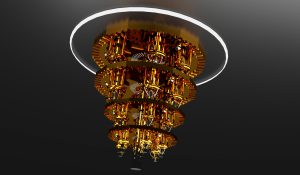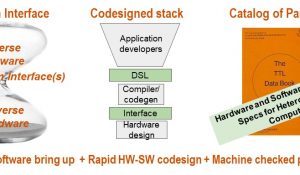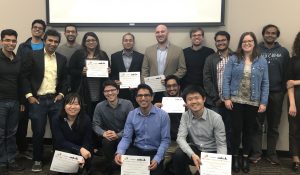


From the Editors’ Desk
We are happy to report another successful year for the SIGARCH Computer Architecture Today blog. In the past year, the blog has covered a wide range of topics — the word cloud below captures the popular tags. We are extremely grateful to the large number of...
The Coming of the Quantum Age
Much of the recent explosion in interest in quantum computing has been driven by the arrival of the “Near-term Intermediate Scale Quantum” era (abbreviated “NISQ”), in which several experimental groups in academic and industrial labs are now able to implement quantum...
NSF Workshop Report on Future Directions for Parallel and Distributed Computing
Due to technology challenges and potential societal benefits, NSF has provided sustained funding for issues surrounding effective scaling of parallel and distributed computing, including through the Exploiting Parallelism and Scalability(XPS) Program, begun in 2012,...
From FLOPS to IOPS: The New Bottlenecks of Scientific Computing
More than a decade ago, the pioneering computer scientist Jim Gray envisioned a fourth paradigm of scientific discovery that uses computers to solve data-intensive scientific problems. Today, scientific discovery, whether observational, in-silico or experimental,...
‘Twas the Night Before ISCA
’Twas the night before ISCA, when all through the lab every grad student working, no sleep had they had. I’d written the intro with obsessive care, In hopes that good data soon would be there. The graphs were each nestled snug in their sections, Set to overpower...
What the New Trends in Cloud Software Mean for Architects
The past five years have seen a significant change in the way cloud applications are designed. In place of large monolithic services, where the functionality of an entire application like a social network or search engine was implemented as a single codebase that...
I-USHER: Interfaces to Unlock the Specialized HardwarE Revolution
We are pleased to share the results of a DARPA ISAT study, I-USHER: Interfaces to Unlock the Specialized HardwarE Revolution, arguing for new hardware/software interfaces to enable the revolution promised by hardware specialization. Advances in hardware specialization...
Rising Stars in Computer Architecture (RISC-A) Workshop Recap
A summary of the second iteration of the Rising Stars in Computer Architecture (RISC-A) Workshop.

A Pop Quiz for Computer Architecture Reviewers
A pop quiz for reviewers.

